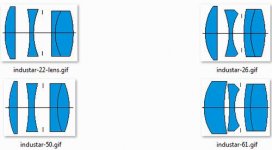bobby_novatron
Photon Collector
I appreciated everyone's feedback from the original thread I started regarding this 50mm lens test. The testing proved to be much more time-consuming and difficult than I originally imagined.
It is exceedingly difficult to maintain correct focus plane, frame alignment, etc. even when using Live View.
Based on the input I received from the previous testing, I re-did the test today (my wife always says I'm a bit obsessive) and tried to compensate for more variables.
---
Objective (no pun intended):
To test the center and corner performance of various 50mm prime lenses.
Methodology:
1. Leica M 240 (latest firmware) on tripod ~ 1.0 meter from test plane
2. original files DNG uncompressed, converted to best-quality JPEG in Adobe Elements
3. White balance manually sampled
4. two second timer used to reduce image blur
5. in-camera lens profile chosen as 50mm F2.8 for all lenses
6. multiple Live View focus samples taken for each lens in order to improve focal accuracy
Lenses used:
1. Canon 50mm F1.4 "Japanese Summilux"
2. Helios-103 53mm F1.8
3. Jupiter-3 50mm F1.5
4. Jupiter-8 50mm F2
5. Industar-50 50mm F3.5
6. Industar-61 L/D 55mm F2.8
7. Olympus 50mm F1.8 (Fotodiox adapter)
8. Olympus 50mm F1.2 (Fotodiox adapter)
9. Carl Zeiss Opton / Sonnar 50mm F1.5 (Contax adapter)
10. Leica Summicron-M 50mm F2 v5
Whew! I think that's it.
It is exceedingly difficult to maintain correct focus plane, frame alignment, etc. even when using Live View.
Based on the input I received from the previous testing, I re-did the test today (my wife always says I'm a bit obsessive) and tried to compensate for more variables.
---
Objective (no pun intended):
To test the center and corner performance of various 50mm prime lenses.
Methodology:
1. Leica M 240 (latest firmware) on tripod ~ 1.0 meter from test plane
2. original files DNG uncompressed, converted to best-quality JPEG in Adobe Elements
3. White balance manually sampled
4. two second timer used to reduce image blur
5. in-camera lens profile chosen as 50mm F2.8 for all lenses
6. multiple Live View focus samples taken for each lens in order to improve focal accuracy
Lenses used:
1. Canon 50mm F1.4 "Japanese Summilux"
2. Helios-103 53mm F1.8
3. Jupiter-3 50mm F1.5
4. Jupiter-8 50mm F2
5. Industar-50 50mm F3.5
6. Industar-61 L/D 55mm F2.8
7. Olympus 50mm F1.8 (Fotodiox adapter)
8. Olympus 50mm F1.2 (Fotodiox adapter)
9. Carl Zeiss Opton / Sonnar 50mm F1.5 (Contax adapter)
10. Leica Summicron-M 50mm F2 v5
Whew! I think that's it.
























